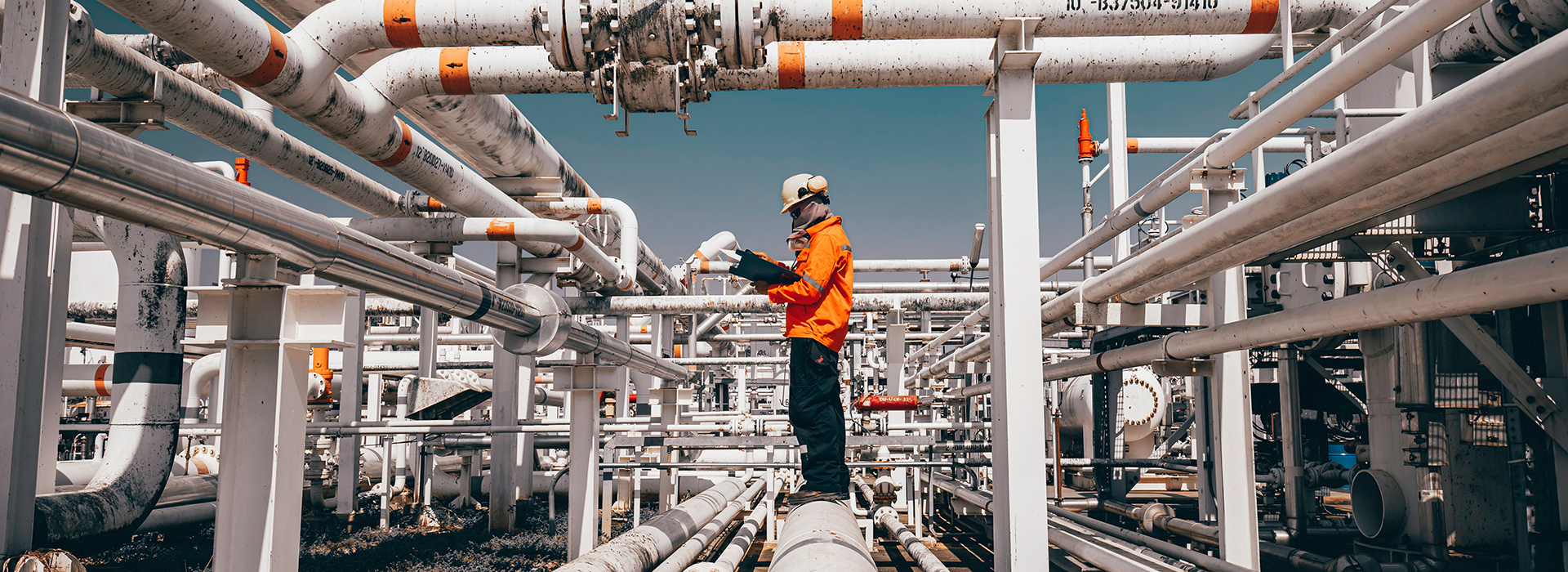Optimising Performance and Enabling Asset Reliability with Strategic Assessment and Planning
A leading oil and gas company in Thailand faced significant challenges with aging offshore facilities and newly acquired assets. dss+ employed a holistic Asset Integrity and Reliability Management (AIRM) approach to address these issues, aligning corporate strategies with on-site operations, mitigating risks, and improving asset reliability.

Challenge
A leading petroleum exploration and production company faced significant challenges with its aging offshore facilities in the Gulf of Thailand. Additionally, the company had acquired assets under a new production agreement for a key offshore block. With facilities operational since the early 1980s, these assets were over 30 years old and required a thorough assessment to ensure optimal reliability and performance.
The key challenges faced included:
- Ensuring operational stability of offshore operations
- Managing risks associated with aging infrastructure
- Implementing proactive asset reliability management
- Aligning high-level corporate strategies with on-site execution
- Enhancing implementation effectiveness at newly acquired sites
To tackle these challenges, the company’s management prioritized the enhancement of asset reliability. They acknowledged the critical need to assess the current state of their assets, outline necessary improvements, and develop strategic recommendations to align corporate goals with on-site operations. This necessitated a comprehensive review and validation of asset integrity to address the challenges posed by aging infrastructure, ensuring long-term operational safety and performance.
dss+ Approach
dss+ adopted a co-curation approach to perform the Asset Integrity Assessment for the two aging assets, with a focus on preventing process safety incidents, increasing productivity, and reducing operational costs.
The approach emphasizes that successful asset reliability assessment goes beyond technicality — it is about establishing partnerships built on trust, mutual understanding, and a shared strategic vision. Stakeholders were engaged across the organizational levels—from executive leadership to on-site teams— to ensure a comprehensive and inclusive assessment process.
dss+ used a holistic Asset Integrity and Reliability Management (AIRM) approach, designed to evaluate the current state of operations and deliver tailored recommendations to help the client achieve proactive asset operational excellence.
The assessment consisted of three key phases:
- Strategic Preparation Phase
- Ensured project team readiness for the Technical Integrity Assessment
- Gained full understanding of the client’s existing Asset Integrity and Reliability Management System
- Reviewed current processes and developed initial hypotheses
- Multi-faceted Assessment Execution
-
- Conducted corporate and site-level evaluations
- Identified gaps in culture, leadership, and management systems
- Verified consistency between corporate strategies and on-site practices
- Validated the reliability and integrity of operational barriers
- Innovative Reporting and Strategic Alignment
-
- Integrated assessment results from both corporate and site levels
- Developed a comprehensive Technical Integrity Assurance (TIA) Assessment Report
- Facilitated a management workshop to align on findings and outline implementation roadmap
Across the three phases, the assessment also incorporated these practices:
- Empowering the client to maintain control while mitigating facility risks, achieving the ‘As Low As Reasonably Practicable’ (ALARP) level
- Cultivating a ‘sense of vulnerability’ to foster a proactive approach toward Asset Integrity and Reliability Management systems
- Ensuring sustainable and effective control over major accident risks through the establishment of self-driven, continuously maintained processes
Impact
The dss+ intervention delivered significant value for the client:
- Strategic Alignment: Reinforced the client’s commitment to zero incidents while enhancing productivity and competitive cost performance
- Risk Visualization: Developed intuitive graphs and heat maps to illustrate operational risks, aligning with leadership’s risk perception
- Cost Optimization: Identified and executed improved maintenance practices, yielding over US$2.5 million in cost savings
- Value Forecasting: Provided insights on potential value realization based on industry-leading benchmarks
- Operational Excellence: Delivered a roadmap for sustained asset management and long-term value creation
This comprehensive approach not only addressed immediate asset integrity concerns but also positioned the client for long-term operational success in their offshore operations, ensuring seamless implementation and improved operational effectiveness at transferred sites.